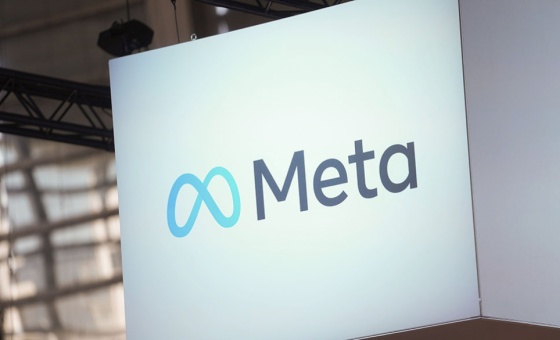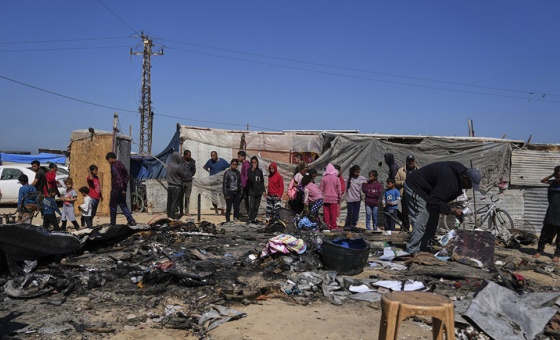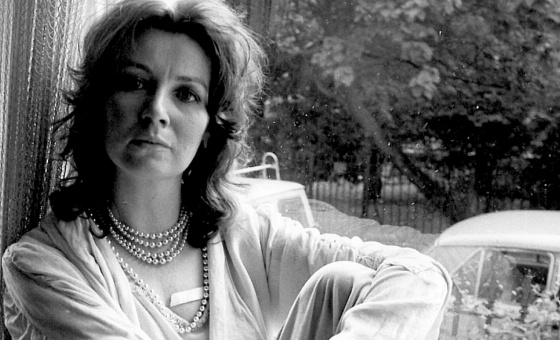This is the last article you can read this month
You can read more article this month
You can read more articles this month
Sorry your limit is up for this month
Reset on:
Please help support the Morning Star by subscribing here
The strength of the GDR’s economy is still being discussed and argued about today. One thing, though, is not in question — in the context of Comecon, the economic community of east European socialist countries, it had the highest scientific-technical development and greatest productivity levels in the socialist world.
I would like to detail a particular aspect in connection with a personal experience. In 1987, I had the opportunity of visiting the “closed city” of Selenograd in the Soviet Union with the responsible minister, Ivan Kolesnikov.
He wished to show me how far developed its micro-electronics industry was. But it became clear to me that the Soviet achievements in micro-electronics and space research were never applied and used in consumer goods production as they had been in the West.
The Soviet Union’s military advances and its achievements in space could only have been achieved on the basis of a highly developed micro-electronics expertise and that application was always the yardstick for decision-making.
During the cold war that information was kept out of the public domain. And there was another factor at play.
Already in 1946, on the borders between the Soviet zone of occupation and Czechoslovakia, uranium ore was being mined to supply the Soviet Union’s atomic weapons programme.
From 1946-90, around 231,000 tons of uranium were refined from the mined ore. At its height, around 130,000 workers in the German Democratic Republic (GDR) were involved in its production.
This is another effect of the cold war between Nato and the Warsaw Pact countries that represented a burden to the GDR.
When the cleaning-up process alone, beginning in 1990, was calculated to cost around 20 billion Deutschmarks, then it becomes clear that the production process has swallowed several 100 billion, which is part of the cost of the armaments race of that period.
I’ve already mentioned the very different starting-out conditions for the GDR vis-a-vis West Germany.
East Germany was obliged to make enormous reparation payments to the Soviet Union, while West Germany was given a much-needed economic stimulus by the Marshall Plan.
Another determining factor for the development of the GDR economy was that after 1955 production output within Comecon was governed by the special requirements of the Soviet Union, although this was not to the advantage of the GDR nor commensurate with its economic structure.
The GDR required oil — ideally over 20 million barrels a year. So, in any trading negotiations, the Soviet Union — as the GDR’s oil supplier — always held the bigger lever.
We tried to shift the balance of our exports away from ships and railway carriages to machine tools and equipment for the extraction of raw materials. From the 1970s, we did also export furniture and textiles in order to better meet the
needs of Soviet citizens for such goods.
The so-called “inner-German trade” was very complicated. The GDR needed convertible currency in order to trade with Western countries.
The Federal Republic of Germany (FRG) offered interest-free credit on hard currency loans but the quid pro quo was that GDR goods, which were needed for our own population, were being supplied to West Germany via big mailing catalogue companies like Quelle at prices which were often only 25-30 per cent of their actual production costs.
Hard currency was sorely needed, so our trading partner was able to force our prices down. In the GDR consumer items of daily use were subsidised by the state. But there were always shortages and dissatisfaction grew.
Once the GDR was incorporated into the FRG, the big West German trading companies immediately took over the GDR market, but using their own suppliers.
A market with around 16 million people had been captured — and over two million workplaces in the East disappeared in a very short time.
Let me here give a brief overview how the GDR economy was destroyed.
In December 1989 the East German government began to introduce
economic reforms. Among other things it abolished the state monopoly on foreign trade. The big companies were to take over responsibility of operating in the market, but at the same time continuing to fulfil their obligations within Comecon.
When it became clear by February 1990 that a unification of both German states would take place, we sought a way of maintaining the GDR’s industrial potential as far as feasible.
The government and representatives of the “round table” found a consensus to set up an official trusteeship to administer the people’s property (virtually all non-private property in the GDR was owned nominally by the people).
On March 1, the government passed the appropriate measure and a prime ministerial deputy was made chair.
In taking this action, we had three aims — the people’s property rights of the means of production would be protected, conditions for the people’s own factories to operate in a market system would be created and
all measures would be taken to protect jobs.
After the elections on March 18, the newly elected people’s chamber (parliament), using its majority, introduced new trusteeship legislation in June, which made it possible for the West to take it over.
From July 1 this trusteeship became the de facto owner of all GDR state institutions. Now their privatisation became the priority. The protection of the people’s property was swept aside.
West German business placed its representatives in all the leading positions. The West German economy took over the East.
While the East German government had sought to put in place transitional measures, now capitulation began in earnest and the handover of the GDR in every sphere, even before its formal joining the Federal Republic.
No-one talked any more of reconstruction, nor did they seek suitable East German personnel for the handover.
The basic modus operandus of the
trusteeship was privatisation before reconstruction.
For people in the street this was seen as selling off the GDR’s economic infrastructure for a pittance.
With the over-hasty currency union, which gave the Alliance for Germany, the puppet party of the West German CDU, its electoral victory, the GDR’s currency was abolished and the markets in eastern Europe lost.
The trusteeship brought in thousands of outside liquidators and soon hundreds of thousands of people lost their jobs in the process of smashing the country’s manufacturing industry.
Trusteeship managers were actually given bonuses of between 44-80,000 Marks if they privatised companies faster than envisaged, whatever the consequences.
Another basic concept after annexation of the GDR was the “return before compensation” process. That meant many thousands of individuals had to hand back houses they had lived in for decades, and in which they had invested considerable money and effort, to the former owners who had left to settle in West Germany after 1945.
In 1990, the first president of the trusteeship, Detlev Rohwedder, had valued the GDR’s economic infrastructure at around 600 billion Marks.
That was roughly the same value estimated by the GDR government and conveyed to Helmut Kohl in talks on February 13 of that year.
Detlev Rohwedder was assassinated in April 1991. His murder was attributed to the RAF but has never been properly solved.
Under his successor, Birgit Breuel, West German business networks were able to grab 87 per cent of the former GDR people’s property, and it was handed over to West German enterprises.
Around 7 per cent went to foreign investors and former GDR citizens or organisations were able to purchase less than 6 per cent.
In Europe, if not the world, the extent of the destruction of the GDR economy is without precedent.
In Britain, over two years, Thatcher only managed to privatise 25 firms. The German trusteeship boasted in 1992 that in four months it had managed to sell off almost 1,000 firms.
During this process, there were innumerable examples of get-rich-quick antics and criminal activities, but not even a dozen were exposed and legal action taken.
The Federal German government had, in essence, absolved the trusteeship of any responsibility in advance by emphasising that the risks were large and it was therefore understandable if mistakes were made.
What happened was a classic case of annexation that had nothing to do with a genuine unification.
Hans Modrow was the last prime minister of the German Democratic Republic. He is currently the honorary chairman of the Left Party (Die Linke).





